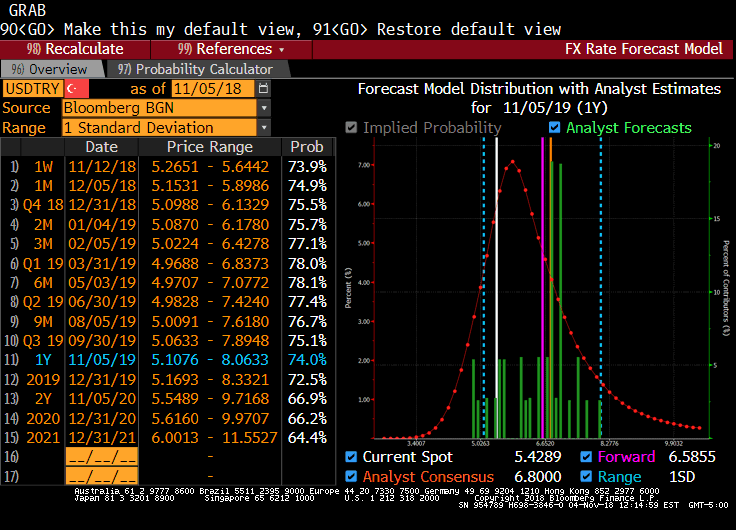Turkey’s economic challenges arise from the imbalances created during the economic boom that saw poverty halved between 2002 and 2011, extensive urbanization, and integration in the world economy through trade and capital flows. The dramatic economic changes saw the rise of Erdogan, who was re-elected as President for a second term in June. His party (AKP) is joined by the Nationalists (MHP).
The imbalances, amidst a global economic climate that had seen emerging markets fall out of favor, were exacerbated by Erdogan’s unorthodox policies and weakening independence of the central bank. The policies aggravated the capital flight. As the markets do, the dollar overshot to the upside and peaked in August. Since then, the dollar has fallen by about 25%, leaving the lira off about 30% for the year (after falling about 18% in 2017). This year will be the sixth consecutive year that lira has depreciated against the dollar. At the end of 2012, the last year the lira rose, the dollar was just below TRY1.7850.
| The sharp currency depreciation is already producing a strong improvement in the external account. On the one hand, exports are more attractive. On the other, domestic demand is compressed. In fact, that is the next shoe to drop. The punishing high-interest rates will drive the economy into a recession in Q4 18, and it will likely color H1 19. The 24% repo rate will have to be cut. However, inflation, even if near a peak of around 25% will only fall slowly. The wide inflation differential weakens the real exchange rate which often sees nominal depreciation as well.
The Great Graphic above contains a great deal of information. On the led hand side, you can see the one-year-time frame is highlighted. What it says is that based on current volatility the dollar will likely (74%) trade between TRY5.1080 and TRY8.063. This produced the chart to the right. The red dotted line is the probability distribution. The purple line is the one-year forward, which is at TRY6.5855 (it is over spot because Turkish interest rates are above the US). The orange line that you have to look carefully to see is the consensus among analysts is at TRY6.80, which implies a stronger dollar/weaker lira than the forward. The green lines show the distribution of analyst forecasts. The dotted blue lines represent 1 standard deviation around spot, which is roughly TRY5.02 and TRY8.27. There is some risk that like the dollar overshot on the upside it may do the same on the downside. The dollar has fallen through initial retracement objectives and the 100-day moving average (~TRY5.60). The next immediate target is near TRY5.31. There is a band between TRY4.85 and TRY5.00 that is more significant. |
USD/TRY |
On the dollar’s side of the equation, the risk is still on the upside, boosted by additional gradual interest rate hikes by the Federal Reserve, and a favorable policy mix. The Federal Reserve projects four rate hikes between now and the end of next year. Quarterly rate hikes through the middle of next year are the odds-on most likely scenario. By the middle of the year, the fiscal stimulus would have run its course, the accumulation of late-cycle behavior, warns the economy may begin slowing A Fed pause in Q3 seems reasonable, which would suggest the removal of a headwind for the lira.
Full story here Are you the author? Previous post See more for Next postTags: #USD,newsletter























